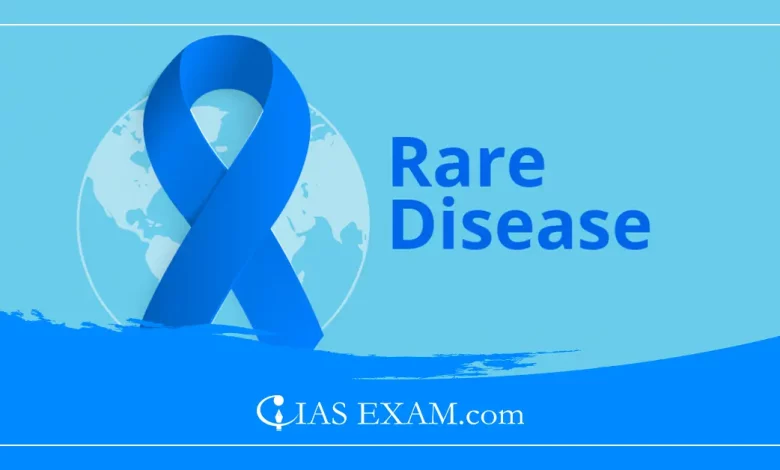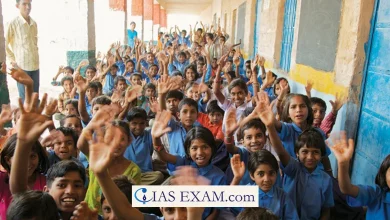
Context
The last day of February is observed as Rare Diseases Day. The theme for Rare Disease Day 2024 is “Share your colors.”
Rare Diseases
- A rare disease is often a lifelong disorder or disorder with an occurrence of 1 or less, per 1000 population.
- Considering the population of India the cautioned threshold for India for a disease to be defined as rare is 1 in 10,000.
- About half of the rare diseases have an effect on youth whilst the remaining are seen in elderly.
- Rare diseases consist of rare cancers, autoimmune diseases, congenital malformations, and infectious diseases amongst others.
- Global Burden: It is envisioned that globally around 6000 to 8000 rare diseases exist with new uncommon diseases being stated in the medical studies regularly.
- Barely 5% of the acknowledged diseases globally are treatable.
Rare Diseases in India
- India accounts for one-third of the global rare disease occurrence, with over 450 recognized diseases.
- These range from widely recognized ones which includes Spinal Muscular Atrophy and Gaucher’s disorder to lesser-recognized ones together with Mucopolysaccharidosis type 1 and Whipple’s disease.
- Though India lacks a preferred definition for rare disease, a rough estimate shows that about 8 crore-10 crore Indians are afflicted by one rare disease or every other; over 75% are kids.
Challenges in Diagnosis and Treatment
- Late Diagnosis: For rare ailment patients, it takes a mean of seven years for their situations to be identified.
- Physicians are normally unaware of how to recognize the symptoms and signs.
- Treatment Available: Less than 50% of the 450-peculiar rare diseases recognized in India are treatable.
- Treatments accredited by the Drugs Controller General of India are available for pretty much 20 rare diseases and may be availed most effective from Centres of Excellence (CoEs).
- Limited Funding: The Budget’s allocation for rare diseases, despite the fact that growing over time but remains low.
- Under the recommendations, as much as ₹50 lakh is authorized per patients, so as to be disbursed to the involved CoE.
- As chronic rare diseases generally require lifelong management and therapy, this quantity is insufficient.
- Lack of Knowledge: The area of rare diseases is complex, heterogeneous, continuously evolving and suffers from a deficit of scientific and scientific knowledge.
- Economic Burden: Rare diseases represent a sizable financial burden independent of a rustic’s length and demographics, springing up from increased healthcare spending.
- Dilemma in funding: As resources are restricted, here is a macroeconomic allocation quandary due to possibility price of investment rare disorder remedy: on one hand and fitness troubles of a far large quantity of people on the alternative.
Policy Initiatives in India
- National Policy for Rare Diseases (2017): India formulated its first-ever National Policy for Rare Diseases in 2017.
- The coverage aimed to provide economic support for the remedy of uncommon diseases, which includes investment for analysis and remedy under the Rashtriya Arogya Nidhi scheme.
- However, this coverage has visible delays in implementation.
- The Ministry of Health and Family Welfare has formulated a National Policy for Rare Diseases 2021 in India to steadily build India’s ability to respond comprehensively to rare disease covering areas of: prevention, cognizance generation, schooling of docs, funding guide for treatment , promoting of research and development for tablets for treatment of uncommon disease and diagnostics at affordable charges.
- Centre of Excellence: In order to provide facilities for remedy and care of patients laid low with rare disease, nine (09) Centres of Excellence were notified, which are optimal Government tertiary hospitals with centers for prognosis, prevention and remedy of rare diseases.
Way Ahead
- Frame a definition of rare diseases, increase budgetary outlays, commit investment for drug improvement and remedy, and increase the variety of CoEs.
- Public and private agencies will be co-opted for investment; CSR initiatives and partnerships can be leveraged to fulfill shortfalls.
- The government must incentivise home manufacturers under the Production-Linked Incentive Scheme, lessen medical trial necessities in appropriate cases, and inspect options which includes repurposed pills and bulk-import.
Source: The Hindu
UPSC Mains Practice Questions
Q.Appropriate local community-level healthcare intervention is a prerequisite to achieve ‘Health for All’ in India. Explain. (2018)





.png)



